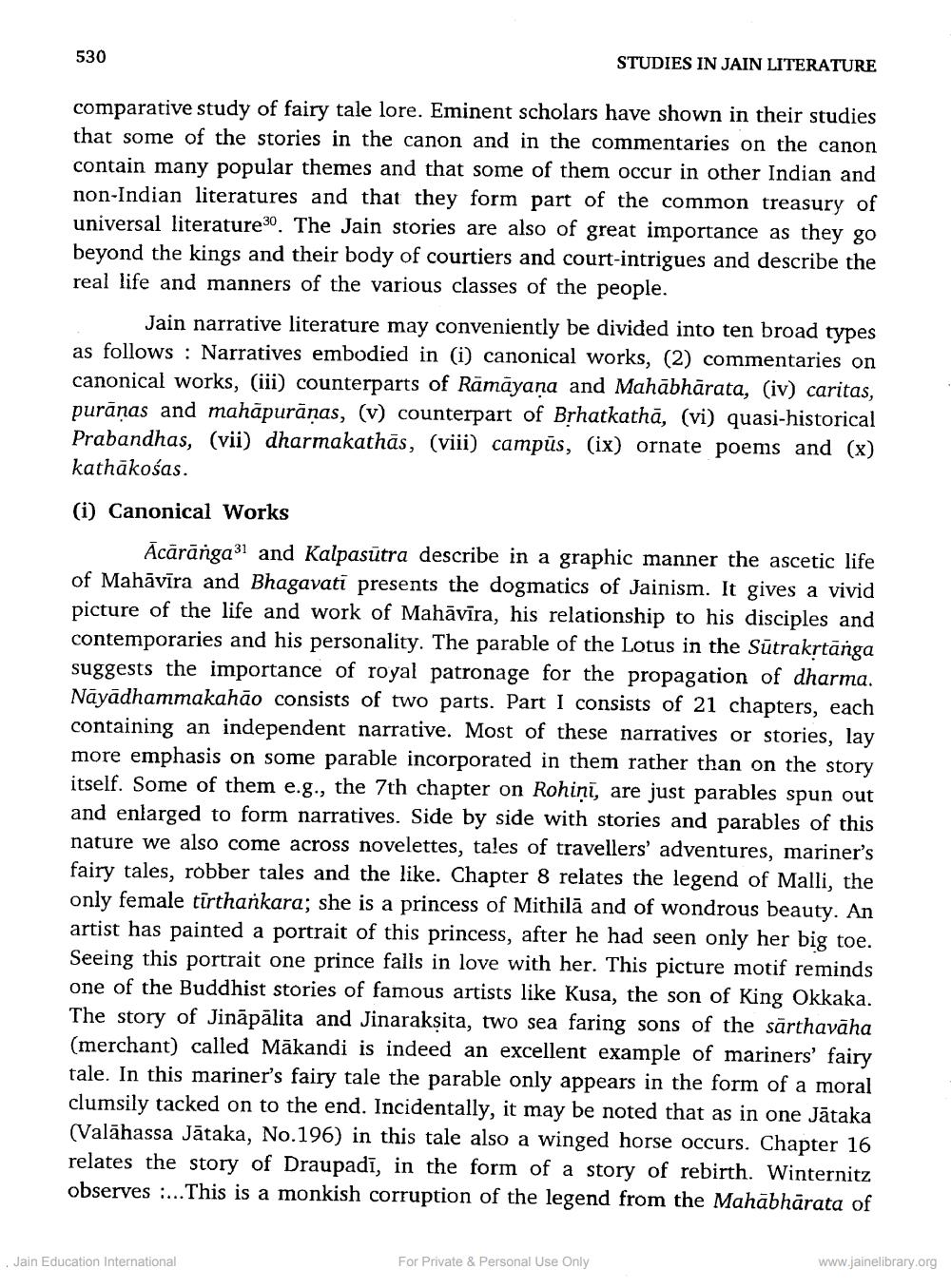________________ 530 STUDIES IN JAIN LITERATURE comparative study of fairy tale lore. Eminent scholars have shown in their studies that some of the stories in the canon and in the commentaries on the canon contain many popular themes and that some of them occur in other Indian and non-Indian literatures and that they form part of the common treasury of universal literature30. The Jain stories are also of great importance as they go beyond the kings and their body of courtiers and court-intrigues and describe the real life and manners of the various classes of the people. Jain narrative literature may conveniently be divided into ten broad types as follows : Narratives embodied in (i) canonical works, (2) commentaries on canonical works, (iii) counterparts of Ramayana and Mahabharata, (iv) caritas, puranas and mahapuranas, (v) counterpart of Brhatkatha, (vi) quasi-historical Prabandhas, (vii) dharmakathas, (viii) campus, (ix) ornate poems and (x) kathakosas. (i) Canonical Works Acaranga31 and Kalpasutra describe in a graphic manner the ascetic life of Mahavira and Bhagavati presents the dogmatics of Jainism. It gives a vivid picture of the life and work of Mahavira, his relationship to his disciples and contemporaries and his personality. The parable of the Lotus in the Sutrakrtanga suggests the importance of royal patronage for the propagation of dharma. Nayadhammakahao consists of two parts. Part I consists of 21 chapters, each containing an independent narrative. Most of these narratives or stories, lay more emphasis on some parable incorporated in them rather than on the story itself. Some of them e.g., the 7th chapter on Rohini, are just parables spun out and enlarged to form narratives. Side by side with stories and parables of this nature we also come across novelettes, tales of travellers' adventures, mariner's fairy tales, robber tales and the like. Chapter 8 relates the legend of Malli, the only female tirthankara; she is a princess of Mithila and of wondrous beauty. An artist has painted a portrait of this princess, after he had seen only her big toe. Seeing this portrait one prince falls in love with her. This picture motif reminds one of the Buddhist stories of famous artists like Kusa, the son of King Okkaka. The story of Jinapalita and Jinaraksita, two sea faring sons of the sarthavaha (merchant) called Makandi is indeed an excellent example of mariners' fairy tale. In this mariner's fairy tale the parable only appears in the form of a moral clumsily tacked on to the end. Incidentally, it may be noted that as in one Jataka (Valahassa Jataka, No.196) in this tale also a winged horse occurs. Chapter 16 relates the story of Draupadi, in the form of a story of rebirth. Winternitz observes .... This is a monkish corruption of the legend from the Mahabharata of Jain Education International For Private & Personal Use Only www.jainelibrary.org




